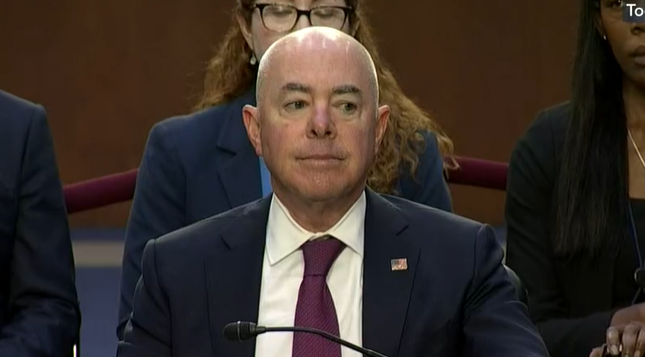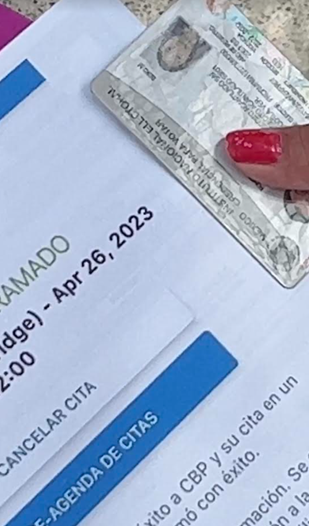The Lasting Implications of the Failed Mayorkas Impeachment
Upcoming Panel: The How and Why of the Mayorkas Impeachment
As you are likely aware, articles of impeachment against DHS Secretary Alejandro Mayorkas — passed by the House in February by one vote — were quickly dismissed by the Senate on April 17. There are any number of implications of the manner in which the Senate dispensed with the Mayorkas charges, but this is likely yet another instance of short-term gain that will come back to haunt the party that currently holds the Senate by the slimmest of margins.
H. Res. 863. The articles of impeachment were introduced as House Resolution 863 (H. Res. 863), which begins “Impeaching Alejandro Nicholas Mayorkas, Secretary of Homeland Security, for high crimes and misdemeanors”.
There were two formal articles in the resolution. The first alleged that the secretary “has repeatedly violated laws enacted by Congress regarding immigration and border security”, while the second claimed that he “has knowingly made false statements, and knowingly obstructed lawful oversight of [DHS], principally to obfuscate the results of his willful and systemic refusal to comply with the law”.
U.S. v. Texas. The first article referred to the Supreme Court’s June 2023 opinion in U.S. v. Texas to explain why the House concluded that impeachment was necessary in Mayorkas’ case.
Briefly, Texas was a challenge brought by a coalition of states to force DHS to arrest and detain criminal aliens pending removal proceedings and pending deportation, in accordance with two provisions in the Immigration and Nationality Act (INA).
The first provision is section 236(c) of the INA, in which Congress mandates the detention of aliens removable under specific grounds of inadmissibility and deportability. The second, section 241(a) of the INA, requires ICE to detain aliens ordered removed on criminal grounds, and it states: “Under no circumstance during the removal period shall [ICE] release an alien who has been found” inadmissible or deportable on such grounds.
In its opinion, as H. Res. 863 explains, the Supreme Court “held that States have no standing to seek judicial relief to compel” either DHS or Mayorkas “to comply with” those mandates, and therefore rejected the states’ claims.
That said, (critically) the majority in Texas held:
even though the federal courts lack Article III jurisdiction over this suit, other forums remain open for examining the Executive Branch’s arrest policies. For example, Congress possesses an array of tools to analyze and influence those policies — oversight, appropriations, the legislative process, and Senate confirmations, to name a few. [Emphasis added.]
Justice Alito, dissenting from the majority opinion in Texas, named a few more “tools” available to the legislative branch to force compliance with its mandates in section 236(c) and 241(a) of the INA, finding: “Congress may wield what the Solicitor General described as ‘political … tools’ — which presumably means such things as … impeachment and removal.”
The proponents of H. Res. 863 latched onto those passages to explain why Mayorkas’ failures to comply with its mandates and statutory requirements satisfied the impeachment standard.
The Constitutional Impeachment Power. Congress’ impeachment authority is premised upon several different provisions in the U.S. Constitution, including Article I, section 2, clause 5, which grants the House of Representatives “the sole Power of Impeachment”, and Article I, section 3, clause 6, which provides the Senate with “the sole Power to try all Impeachments”.
The impeachment standard, however, is contained in Article II, section 4 of the Constitution. It states: “The President, Vice President and all civil Officers of the United States, shall be removed from Office on Impeachment for, and Conviction of, Treason, Bribery, or other high Crimes and Misdemeanors.”
While the terms “treason” and “bribery” have fairly settled definitions, the question of what constitutes a “high crime” or an impeachable “misdemeanor” is not quite as settled.
The Senate impeachment website notes that the definition of those terms “has long been the subject of debate”, but as the Constitution website for the Congressional Research Service (CRS) explains, each “has been fleshed out over time, in a manner perhaps analogous to the common law, through the practice of impeachments in the United States Congress”.
What the Senate Did — and Didn’t Do. The articles of impeachment against Mayorkas were received in the Senate on April 16, and here’s how NBC News describes what happened there the next day:
Democrats, who control the upper chamber, easily dispensed with the pair of impeachment articles — as well as several motions to adjourn the Senate.
They passed a motion declaring that the first impeachment article — accusing Mayorkas of failing to enforce immigration laws — “does not allege conduct that rises to the level of a high crime or misdemeanor” and “is therefore unconstitutional.” The party-line vote was 51-48, with Sen. Lisa Murkowski, R-Alaska, voting “present.”
Democrats also passed a motion declaring the second article — alleging that Mayorkas lied to Congress under oath — unconstitutional. That strictly party-line vote tally was 51-49.
The Senate then voted to end the trial “sine die,” meaning for good, less than 3 1/2 hours after it began.
Respectfully, I have been alive through at least four presidential impeachment efforts (Nixon, Clinton, and Trump, twice), and had no idea that any impeachment could be dispensed with in “less than 3 ½” hours in the Senate. But that’s likely because the Mayorkas proceedings as described in that excerpt aren’t how impeachment trials in the “upper chamber” are supposed to work.
You don’t need to trust me, however, because here’s how the Senate’s own website describes the process:
After the House of Representatives sends its articles of impeachment to the Senate, the Senate sits as a High Court of Impeachment to consider evidence, hear witnesses, and vote to acquit or convict the impeached official. A committee of representatives, called “managers,” act as prosecutors before the Senate.
Notably absent from what happened last Wednesday was any consideration of evidence, witness testimony, arguments from House managers, or even a “vote to acquit or convict” Secretary Mayorkas. Just the passage of two “substantive” motions and one motion to adjourn.
For his part, Senate Majority Leader Chuck Schumer contended after those votes that: “[T]he Senate set a very important precedent that impeachment should be reserved only for high crimes and misdemeanors, and not for settling policy disagreements.”
Plainly, the Senate “set a precedent”, but in the long run it’s likely not the sort of precedent Sen. Schumer described.
While I am not privy to deliberations in the majority leader’s office, Schumer likely wanted to get rid of the articles of impeachment as quickly as possible for the same reasons the sponsors of H. Res. 863 brought those articles to begin with: a hearing would focus attention on the disaster President Biden’s and Secretary Mayorkas’ policies have created at the Southwest border.
If spiking any such attention was Schumer’s goal, he achieved it, but the Senate’s actions did not create the sort of precedent that would prevent “The President, Vice President [or] civil Officers of the United States” from being impeached and convicted in the future over similar “policy disagreements”.
Only a formal trial and a detailed decision explaining why such disagreements didn’t satisfy the “high crimes and misdemeanor standard” would have done that. That’s exactly how, as CRS explains, prior impeachment precedents have operated in the past.
The “Schumer Rule”. The precedent that Schumer has set, however, is one that grants untrammeled authority to the party holding the majority in the Senate to simply (and expeditiously) dispense with any impeachment articles it doesn’t like.
Imagine, for example, that Donald Trump is elected again in November, Republicans gain the two (or more) seats in the “upper chamber” they need to claim the majority there (the vice president would be the tiebreaker), and that Democrats gain control of the House.
If the now-majority House Democrats in this scenario were to thereafter attempt to impeach President Trump, nothing would stop the Republican majority leader of the Senate from marshalling his fellow partisans to vote “aye” on behalf of a motion “declaring that the impeachment articles” don’t “allege conduct that rises to the level of a high crime or misdemeanor” and are “therefore unconstitutional”.
There may be a subsequent political price to pay, but you’d be surprised how quickly even nakedly partisan efforts can be forgotten in the hurly-burly of “current events”. And if this all sounds far-fetched, I can all-but guarantee that the “Schumer rule” will be at least referenced, if not followed, at some point in the future.
How can I be so certain? Because at least one similar Democratic effort for short-term partisan gain has redounded to the party’s disadvantage.
As an October 2020 opinion piece in The Hill noted, then-Senate Majority Leader Harry Reid (D-Nev.) changed Senate rules in 2013 to end a filibuster that (up to that point) required 60 votes to confirm judicial nominations and executive-branch appointments. Reid made an exception, however, for would-be Supreme Court justices.
The outlet noted:
Despite warnings from the minority that it was a decision they would live to regret, Reid and the Democrats deployed the nuclear option anyway.
Their day of reckoning came on Jan. 20, 2017, with a Republican president and Senate in control of judicial nominations. For the past four years, President Donald Trump and Republicans have done their constitutional duty in nominating and confirming federal judges, including now three Supreme Court nominations. But don’t blame Trump or Senate Majority Leader Mitch McConnell. Blame Harry Reid who put politics ahead of principle and opened the door for Justices Neil Gorsuch, Brett Kavanaugh and soon Amy Coney Barrett.
Left out from that narrative is that then-Senate Majority Leader Mitch McConnell (R-Ky.) thereafter changed the “Reid rule” for Supreme Court justices in 2017 when Democrats were filibustering the nomination of then-Judge Neil Gorsuch for appointment to the High Court, to allow Gorsuch to be confirmed on a simple majority vote.
More than anything, that proves that congressional norms, once broken, simply encourage more partisanship, and additional rulemaking vandalism. And it will be as true for future impeachments as it was for judicial nominations.
The Senate website proclaims: “As adopted by the framers of the Constitution, [impeachment] is a fundamental component of the system of ‘checks and balances.’” That was an apt description of the equilibrium between congressional and executive power up until last Wednesday, when the Senate majority leader tipped the impeachment balance in the executive’s favor to hide the chaos at the Southwest border.






